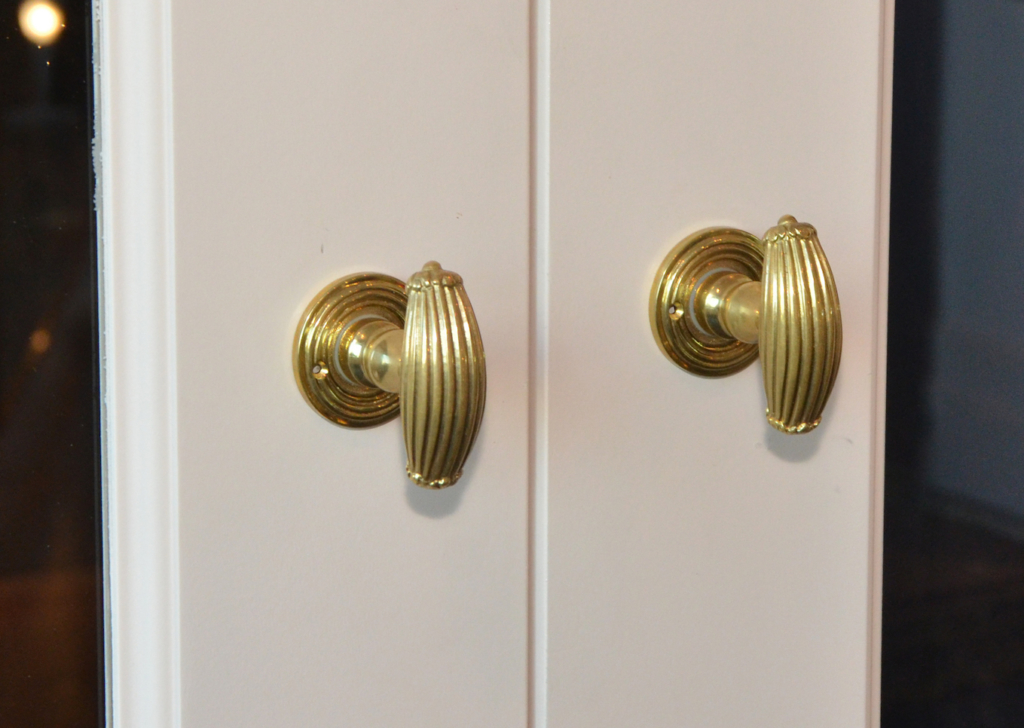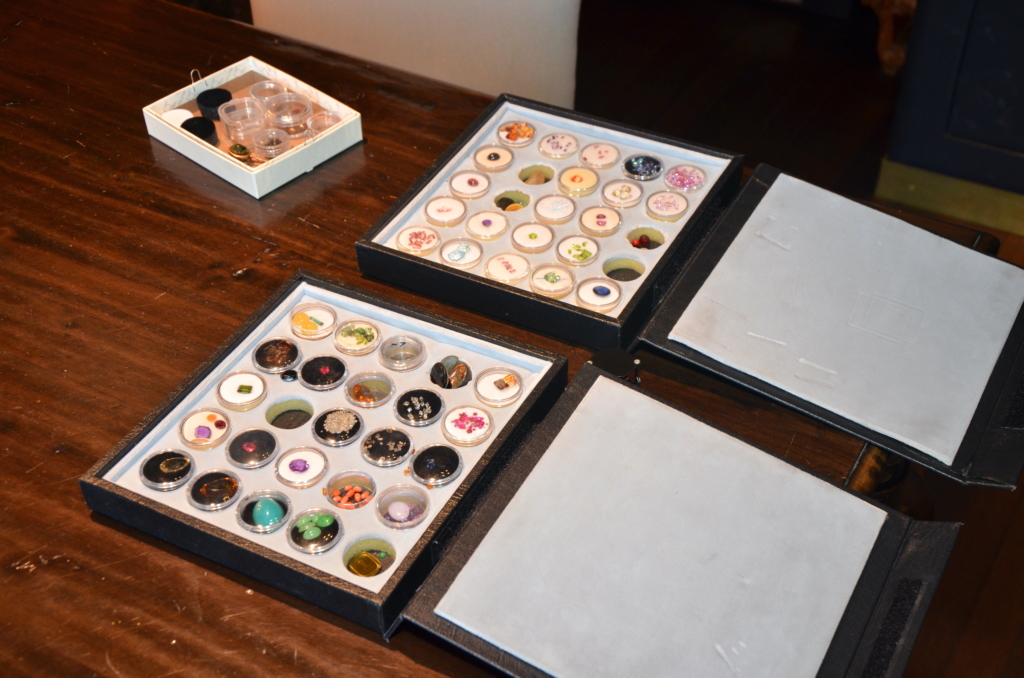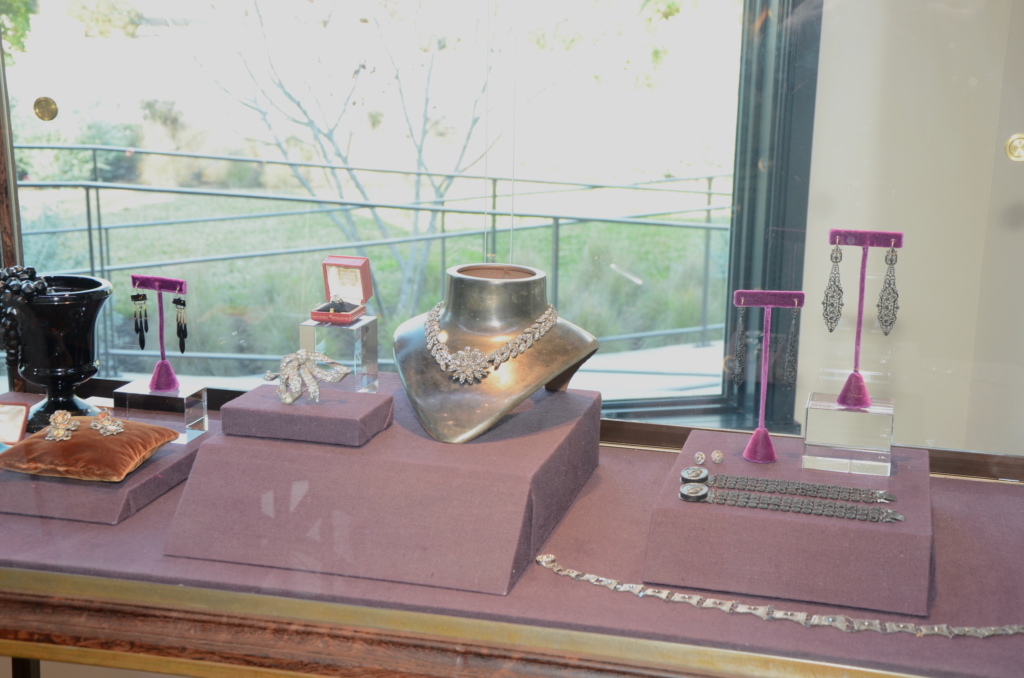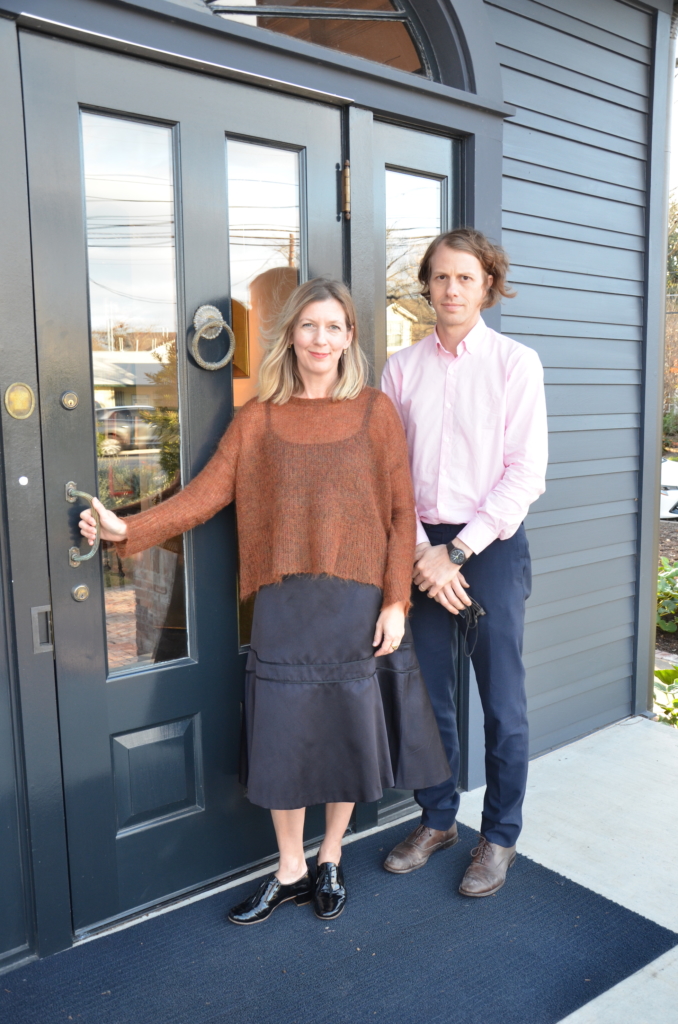
The words “hardware” and “jewelry” might not immediately look like they belong in the same sentence, but there are easy parallels to draw between these age-old trades. Both rely on highly skilled artisans, bespoke methods, metals and molds. Both can be personalized with engraving, embellishments, textures and finishes. Ideally reflections of their owners, they’re essentially small objects that can make big statements. Especially within the realm of luxury hardware, knobs and pulls distinguished by intricate textures, semi-precious stones or other dazzling details might be referred to as “house jewelry.”
With these creative connections in mind, we visited the esteemed Austin jewelry store Bell & Bird. Named in honor of Victorian-era British explorers Gertrude Bell and Isabella Bird, and launched by married duo Rhianna and Cyrus Shennum — she’s from Michigan, he’s from West Texas and they’ve called Austin home for more than 15 years — Bell & Bird is two-fold in that it offers an expertly curated selection of antique jewelry (focused on the 18th and 19th centuries) and an in-house line designed and handcrafted in an on-site workshop. Over the past decade, Bell & Bird has garnered praise and press from near and far (from Austin Monthly and Tribeza to Glamour and T Magazine) and landed on Vogue lists such as “45 Dreamy Engagement Rings for Every Type of Bride” and “The 10 Most Exquisite Lockets to Buy Now (Because the Victorians Were on to Something).” Last spring, the destination shop relocated to a stylishly remodeled 1920s-era home that Alexander Marchant outfitted with door hardware from Omnia (a family-owned manufacturer based in New Jersey) and Bronzes de France (an iconic French institution that preserves historical designs originally created for 18th- and 19th-century palaces and chateaux).
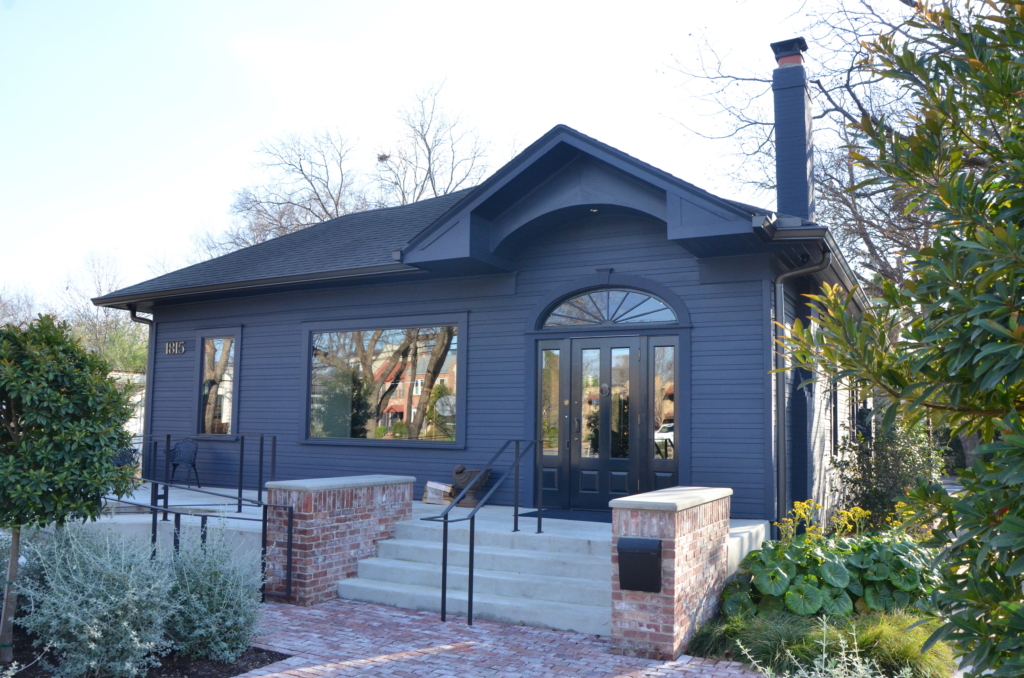
During our chat in the Bell & Bird workshop, Cyrus was busy at his jeweler’s bench while Rhianna shed light on the history embedded in Georgian-era jewelry, the time-consuming process behind their beloved eternity bands and how bespoke hardware contributes to the customer experience. Highlights from our conversation follow.
Which architectural hardware fabrication techniques do you respond to that might resemble something that you would see on jewelry?
I definitely respond to the pieces that look like jewelry and that have handwork to them … Bronzes de France pieces in particular. I’m not aware of the construction techniques, but I can tell when something is better than something else [laughs] and has more handwork to it. I’m most attracted to the heavy brass things that look as if they could’ve been made 300 years ago [but are] brand new — traditional techniques and traditional forms for the most part.
What’s your favorite regional era for jewelry and why?
Probably Georgian-era pieces, which is 1710 roughly to 1830. It was an era of four King Georges in England. The jewelry coming out of France, Portugal and Spain during that time period was also pretty remarkable. Everything’s bespoke and it’s before the Industrial Revolution, when they start mechanizing things. You can trace the origin of a piece of jewelry by the stones that are in it depending on which country was colonizing what source. If it’s topaz — they come from Brazil — that means it’s from Portugal because that’s where their colonies were. There’s just a lot of really interesting world history [involved]. So you can learn your history via a little gem. That’s our favorite time period to find.
For someone who doesn’t follow jewelry design, how would explain your process of drawing inspiration from antique jewelry and translating it into your in-house line?
Well, the antique jewelry inspires the custom work that we do here in-house. It can be as fine a detail as the shoulder of a ring … or the reeded design on the door handles. It’s hard to pinpoint what it is. You see some little element and it moves you in some way. And you think, “I need to repeat this. It can’t just die on the vine with this one little ring.” Our jewelers here use really classical techniques — not to make a reproduction but [a piece] that pulls tiny elements. It’s a really fun thing to think about.
Do a lot of your antique pieces come from a certain part of the world? Or do you source from all over?
The majority of things are coming from Western European countries. We go to England most frequently and London is the center of the antique jewelry trade in Europe. Lots of things come through there — French, Belgian, the Netherlands, a little bit from Portugal and Spain. You stop seeing the really fine jewelry coming out of [Portugal and Spain] during the French Revolution period. They lost hold of a lot of their money, so you don’t see as many nice things coming out of Spain and Portugal after about 1800. But lots of English things and lots of continental European things.
Do you ever take your in-house line to market in Europe?
We have, yes. We’ve exhibited in London three times, which was a really great experience to meet some collectors from European countries. We met some collectors who are at the end of their collecting careers and starting to sell some of their pieces. When you’re dealing in things this old, it’s a very barren market. So being able to find a new source in any way possible is really important. We sometimes do little pop-up shops in other cities — we’ve done them in New York and Houston. And that’s something we might do again. Austin is such a popular town it seems the world is coming here more and more. We have some really great clients who live in London and they come for South by Southwest and Austin City Limits every other year — they swap events. And so these two clients from London come to our store and buy really fine antique jewelry and take it back to London, which really tickles me because we are typically buying in London. But they have such a great time coming here.
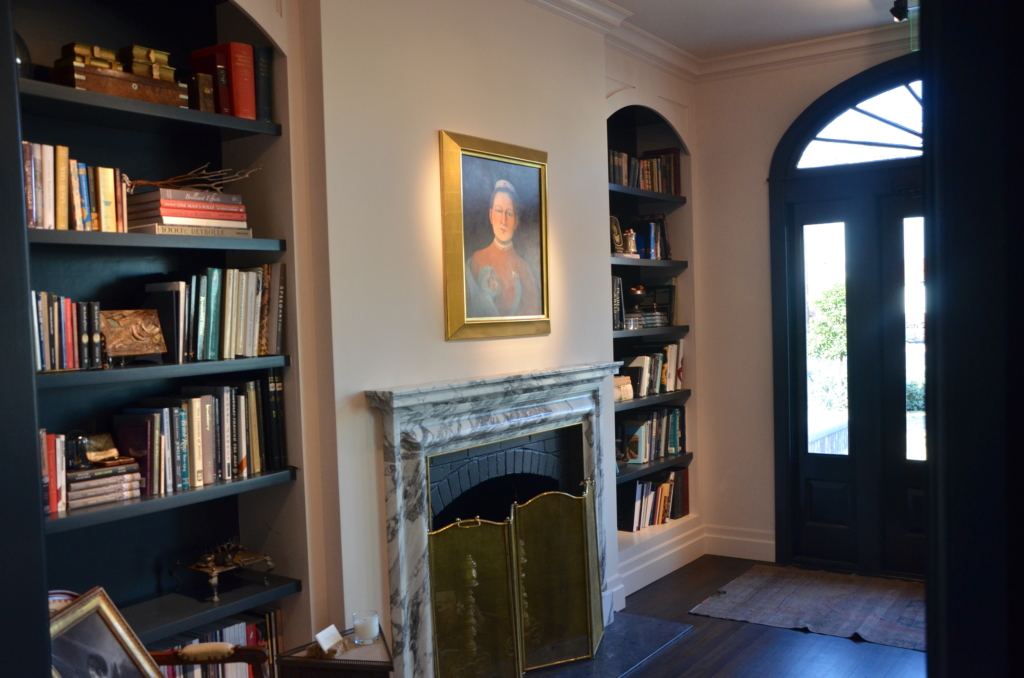
With your in-house line, is there something that has become a signature piece?
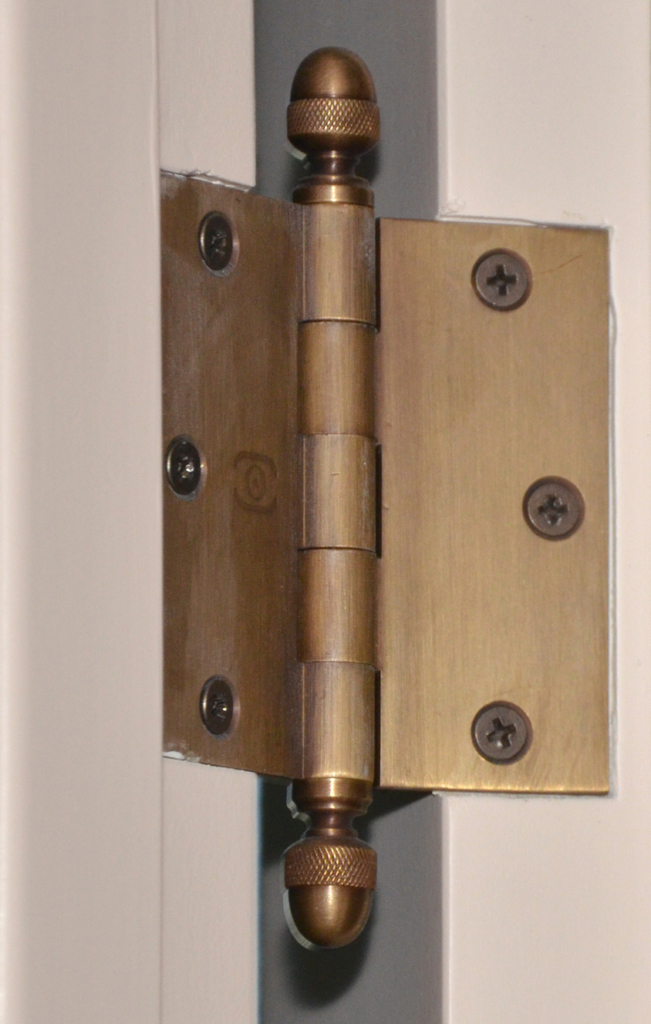
One piece that is really well-loved and we do really well with are these cut-away eternity bands. The setting technique is taken directly from 18th-century jewelry design. It’s a very difficult, time-consuming way to set diamonds, but it’s a really unique look. We source the stones we use from other pieces of antique jewelry that have been disassembled, and then collect a match set of diamonds that are the right color and size, and then make a ring. Just collecting enough stones for one setup for a ring takes time, and then the actual ring takes our jewelers about 40 straight hours of benchwork to make. So it’s very time-consuming, but the product is just beautiful and not something that you can get a different version of. This year we’re really focusing on developing a couple of collections inspired directly from our antiques. One is a snake bracelet. We have a model on the floor. You see snake jewelry a lot in the 19th century. [It’s] sentimental jewelry symbolic of eternal love and renewal, all kinds of lovely sentiments. Over the years, we’ve sold many beautiful snake pieces. And so we designed a bracelet that we’re hoping will become a signature piece for us. [It’s] something that fits like a watch, very personal to each person’s wrist. And clients can choose their little finishing details on them, whether it’s sapphire eyes or enamel scale detail or something like that. We’re starting a couple of collections like that this year. We’re doing one with acorns, something with horseshoes and then the snakes.
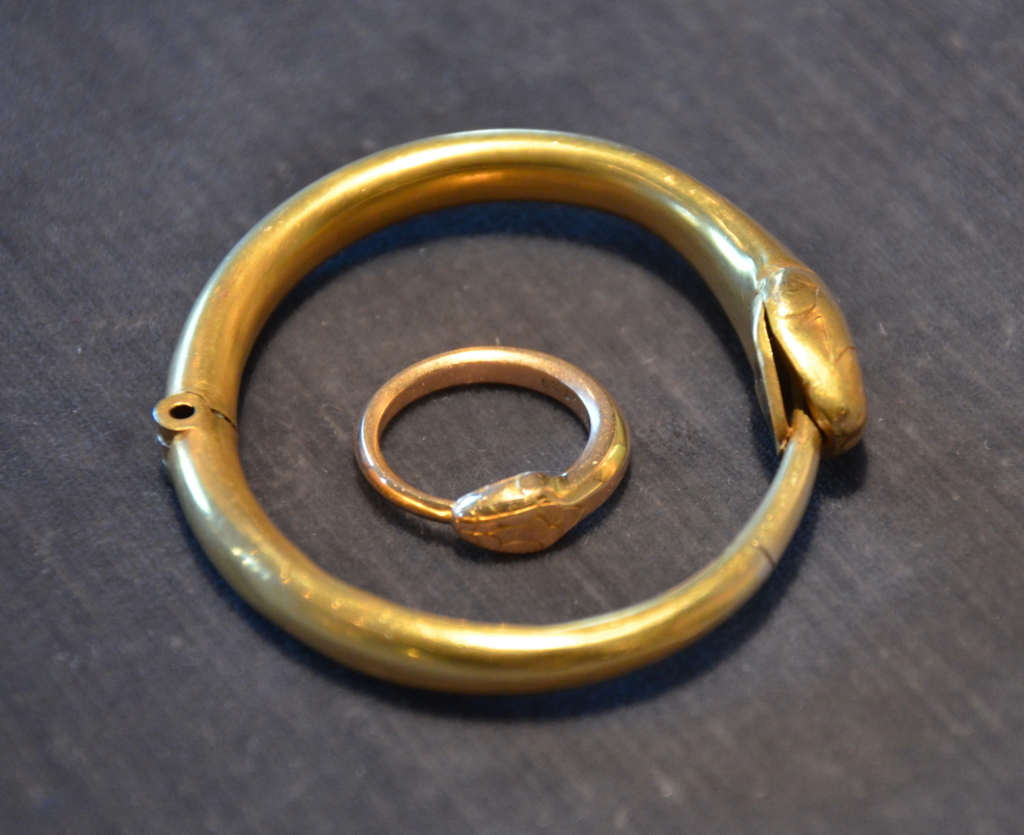
What about the antique jewelry? Is there something you’ve become known for?
It’s more of an aesthetic and a time period. So curating … There are so many antiques out there but finding pieces that have a conversation with modern aesthetics is a fun and tricky balance. Because an antique can look like your grandmother’s antique or it can look like this time [period] was wonderful. [Someone might ask], “Where did you get that?” [And the wearer can say], “Oh, it’s 200 years old.” When that’s a surprise to someone, I think that’s a win for us.
Do you ever buy anything online before seeing it in person?
Technology allows us to shop options all over the world every day, which is something we were not able to do in the past. A lot of times we’ll fly to London or France if it’s important for us to view the things the person. But a lot of times we’ll just roll the dice from photographs. And sometimes you’re pleasantly surprised and sometimes you’re not [laughs].
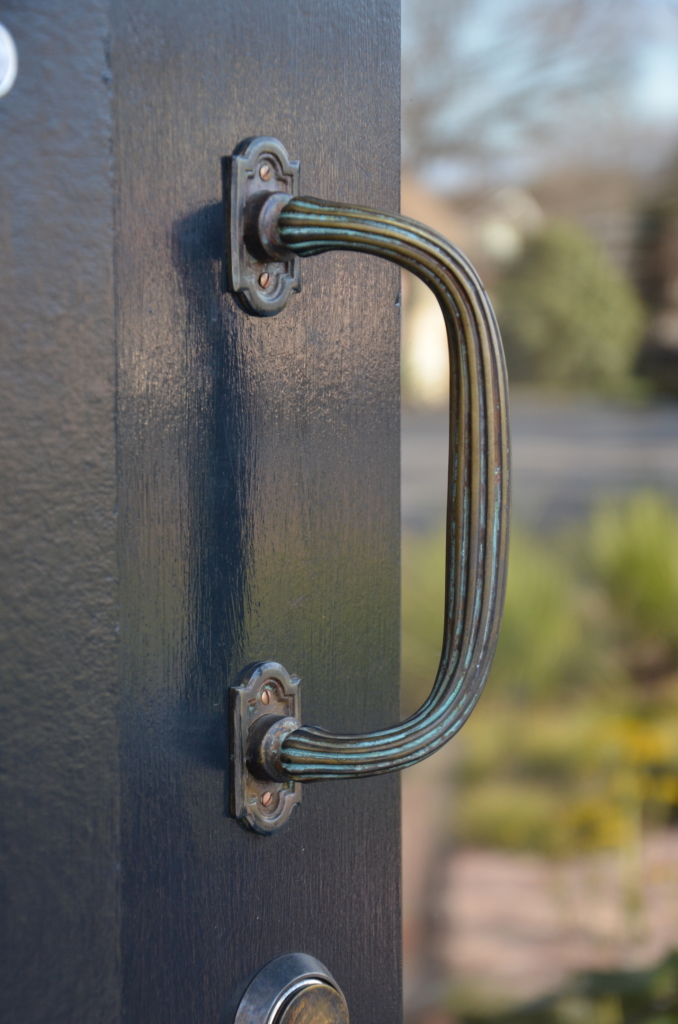
I’d love to hear a little about the space — how you modernized it and how Alexander Marchant came into play.
One way Laurie [Marchant] influenced [the space] that wasn’t through Alexander Marchant is that she recommended her good friend Alix Knauth, who helped us with the lighting design, which I think was really important for the showroom. Alix and Laurie have worked together on lots of different projects, so they have a lot of conversations about different things. Alexander Marchant offers lines that, as an end consumer, I would never have known about. And the hardware on a building is like jewelry in a room — it just anchors the space. So many people when they walk in here, they just have a feeling. And I think all those tiny little details contribute to that overall wonderful feeling that people get when they come in here. I think if we didn’t have those details, it wouldn’t be such an experience to come in. Especially retail spaces often aren’t able to be so thoughtful about all these little tiny details. So the hardware to me was very similar to the jewelry on a human — it’s like jewelry on our building.
Bell & Bird
1815 W. 35th St., (512) 407-8206, Austin, TX, 78703, bellandbird.com

